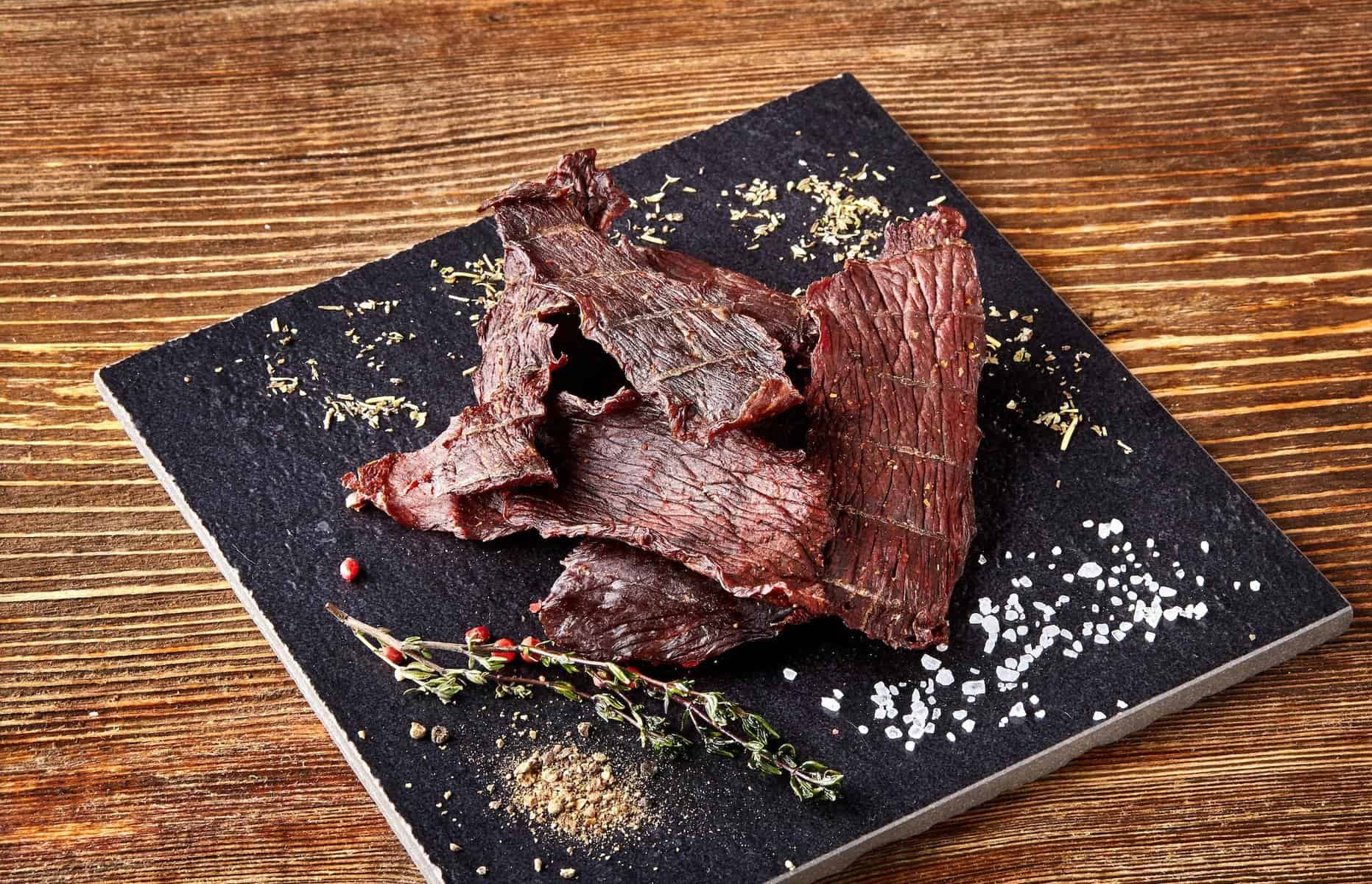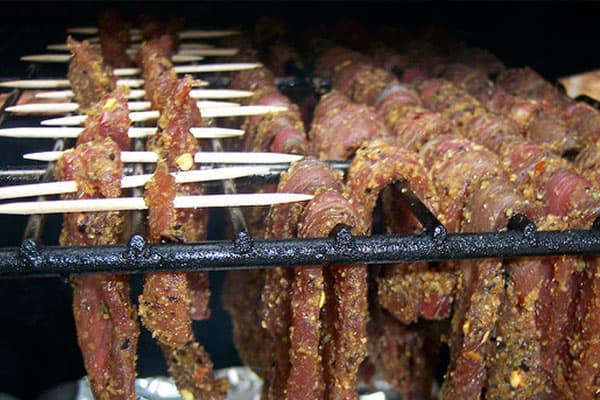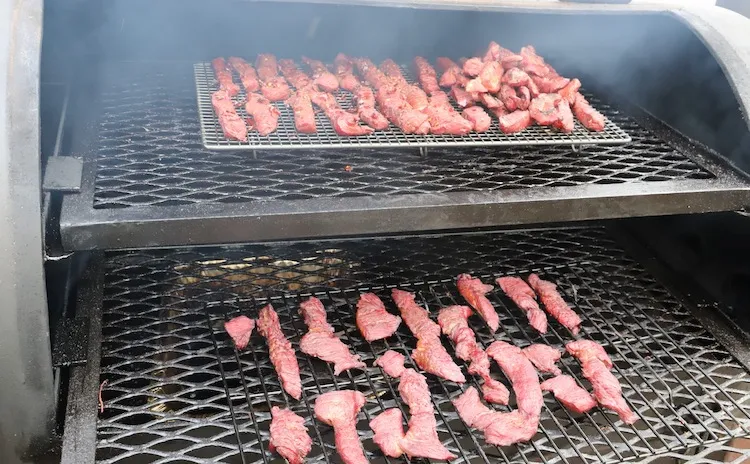How to make beef jerky in an electric smoker? To make beef jerky in an electric smoker, slice the beef thinly, marinate it in your preferred seasoning, preheat the smoker to 160-180°F (71-82°C), lay the beef slices on the smoker racks with space between each piece, smoke for 4-6 hours or until the jerky reaches your desired texture, then let it cool before enjoying.
The Secret to Mouth-Watering Beef Jerky: Mastering the Art of Electric Smoker Cooking
Beef jerky has been enjoyed for centuries as a delicious and convenient snack. It is believed to have originated from South America, where indigenous tribes used to dry strips of meat to preserve it for long journeys or times of scarcity. Over time, beef jerky has evolved into a popular snack all around the world.
Making your own beef jerky can be a rewarding and satisfying experience. Not only do you have control over the ingredients and flavors, but you also get to enjoy the process of transforming raw meat into a delicious and shelf-stable snack. Plus, homemade beef jerky is often much more affordable than store-bought options.
Understanding the Basics of Electric Smoker Cooking
An electric smoker is a cooking appliance that uses electricity to generate heat and smoke for cooking food. It is a convenient and efficient way to smoke meat, including beef jerky. Unlike traditional smokers that require charcoal or wood for fuel, electric smokers are easy to use and maintain.
One of the advantages of using an electric smoker for beef jerky making is the precise temperature control it offers. Maintaining a consistent temperature is crucial when smoking meat, as it ensures even cooking and prevents the risk of foodborne illnesses. Electric smokers also eliminate the need for constant monitoring and adjusting, allowing you to set the desired temperature and let the smoker do its job.
However, it is important to take safety precautions when using an electric smoker. Always read and follow the manufacturer’s instructions, and make sure to place the smoker in a well-ventilated area away from flammable materials. Additionally, use heat-resistant gloves or tongs when handling hot surfaces or removing food from the smoker.
Choosing the Right Cut of Beef for Jerky Making
When it comes to making beef jerky, not all cuts of beef are created equal. Some cuts are better suited for jerky making due to their texture, flavor, and fat content. The best cuts of beef for jerky making are lean and have minimal connective tissue.
Top round, bottom round, and eye of round are popular choices for beef jerky. These cuts come from the hindquarters of the cow and are naturally lean. They also have a relatively uniform thickness, making them easier to slice into thin strips.
When choosing beef for jerky making, consider the fat content. Fat can become rancid during the drying process, affecting the flavor and shelf life of the jerky. Trim any visible fat from the meat before slicing it into strips.
Preparing the Meat for Smoking
Properly slicing the beef is crucial for achieving the desired texture in beef jerky. The meat should be sliced against the grain, which means cutting perpendicular to the muscle fibers. This helps break down the muscle fibers and makes the jerky easier to chew.
To slice the meat evenly, it is recommended to partially freeze it beforehand. This firms up the meat and makes it easier to handle and slice. Use a sharp knife to cut the partially frozen meat into thin strips, about 1/8 to 1/4 inch thick.
Trimming the fat from the meat is also important for successful jerky making. Fat can hinder the drying process and lead to spoilage. Use a sharp knife to carefully remove any visible fat from the meat before slicing it into strips.
Before smoking the meat, it is essential to prepare it for marinating. Marinating not only adds flavor but also helps tenderize the meat. Combine your choice of marinade ingredients in a bowl or resealable bag, then add the sliced beef. Make sure all pieces are coated evenly with the marinade, then refrigerate for at least 4 hours or overnight.
The Importance of Marinades and Seasonings
Marinades and seasonings play a crucial role in enhancing the flavor of beef jerky. They add depth, complexity, and a touch of your personal taste preferences to the final product. The marinade also helps tenderize the meat, making it more enjoyable to eat.
There are countless marinade and seasoning recipes available for beef jerky. Some popular ingredients include soy sauce, Worcestershire sauce, liquid smoke, garlic powder, onion powder, black pepper, and various spices and herbs. Experiment with different combinations to find your favorite flavors.
When marinating the beef, make sure to use a non-reactive container or resealable bag. This means avoiding containers made of aluminum or copper, as these can react with the acidic ingredients in the marinade. Instead, opt for glass or food-grade plastic containers.
Smoking Techniques for Perfect Beef Jerky
Setting up the electric smoker properly is essential for achieving the perfect smoke flavor in beef jerky. Start by preheating the smoker to the desired temperature, usually around 160-180°F (71-82°C). This temperature range allows for thorough cooking while still preserving the moisture in the meat.
To add smoke flavor to the jerky, use wood chips specifically designed for smoking. Popular choices include hickory, mesquite, applewood, and cherry wood. Soak the wood chips in water for about 30 minutes before using them in the smoker. This helps create more smoke and prolongs their burning time.
Once the smoker is preheated and the wood chips are ready, place the marinated beef strips on the smoker racks. Make sure to leave some space between each piece to allow for proper airflow and even cooking. Close the smoker door or lid and let it do its job.
Temperature and Timing: The Key to Mouth-Watering Jerky
Maintaining a consistent temperature throughout the smoking process is crucial for achieving mouth-watering beef jerky. The ideal temperature range for smoking beef jerky is around 160-180°F (71-82°C). This temperature allows the meat to cook thoroughly while still retaining its moisture.
The cooking time for beef jerky can vary depending on factors such as the thickness of the meat, the desired level of doneness, and the ambient temperature. On average, it takes about 4-6 hours to smoke beef jerky. However, it is important to check the doneness of the jerky regularly to avoid overcooking.
To check the doneness of beef jerky, remove a piece from the smoker and let it cool for a few minutes. Bend the jerky strip gently; it should bend without breaking but still feel firm and dry to the touch. If it snaps or feels too soft, it needs more time in the smoker.
Tips for Achieving Consistency in Jerky Texture
Achieving the desired texture in beef jerky can be a bit tricky, but with some practice and attention to detail, you can master it. The texture of beef jerky should be chewy and slightly tender, without being too tough or dry.
To achieve the desired texture, make sure to slice the meat against the grain. This helps break down the muscle fibers and makes the jerky easier to chew. Additionally, marinating the meat helps tenderize it and adds moisture.
Avoid overcooking the beef jerky, as this can result in a dry and tough texture. Regularly check the doneness of the jerky by removing a piece from the smoker and testing its flexibility. If it snaps or feels too soft, it needs more time in the smoker.
The Role of Wood Chips in Electric Smoker Cooking
Wood chips play a crucial role in adding smoke flavor to beef jerky when using an electric smoker. Different types of wood chips impart different flavors, allowing you to experiment and find your preferred taste profile.
Hickory wood chips are a popular choice for beef jerky, as they add a rich and smoky flavor. Mesquite wood chips provide a stronger and more intense smoke flavor, while applewood and cherry wood chips offer a sweeter and milder smoke flavor.
To properly use wood chips in an electric smoker, soak them in water for about 30 minutes before using them. This helps create more smoke and prolongs their burning time. Drain the soaked wood chips before adding them to the smoker box or tray.
Storing and Preserving Your Homemade Beef Jerky
Properly storing beef jerky is essential for maintaining its quality and extending its shelf life. Homemade beef jerky can last for several weeks when stored correctly.
To store beef jerky, place it in an airtight container or resealable bag. Make sure to remove as much air as possible before sealing the container or bag. This helps prevent moisture from entering and spoiling the jerky.
It is also important to store beef jerky in a cool, dry place away from direct sunlight. Exposure to heat, humidity, and light can accelerate spoilage and affect the texture and flavor of the jerky.
If you want to extend the shelf life of your homemade beef jerky, consider vacuum-sealing it. Vacuum-sealing removes all air from the packaging, creating an oxygen-free environment that inhibits the growth of bacteria and mold.
Mastering the Art of Electric Smoker Cooking for Delicious Beef Jerky
Making homemade beef jerky using an electric smoker can be a fun and rewarding experience. By understanding the basics of electric smoker cooking, choosing the right cut of beef, preparing the meat properly, and using flavorful marinades and seasonings, you can create mouth-watering beef jerky that rivals any store-bought option.
Remember to pay attention to temperature and timing, as they are key to achieving the perfect texture and doneness in beef jerky. Use wood chips to add smoke flavor, and store your homemade jerky properly to maintain its quality and extend its shelf life.
With practice and experimentation, you can master the art of electric smoker cooking for delicious beef jerky. So why not give it a try? Gather your ingredients, fire up the electric smoker, and enjoy the process of transforming raw meat into a flavorful and satisfying snack.
Originally posted 2024-02-07 01:51:12.



